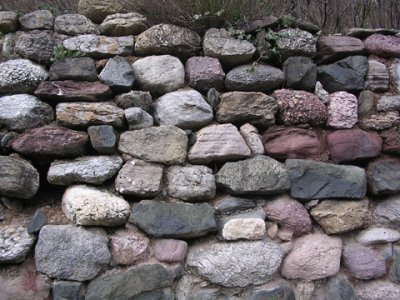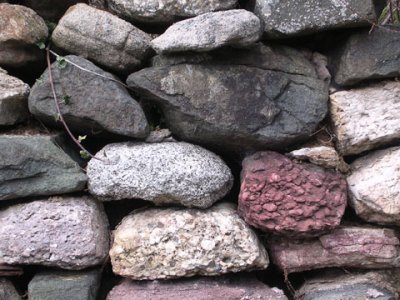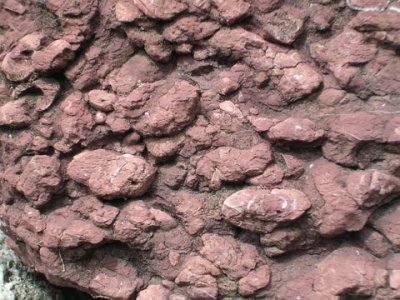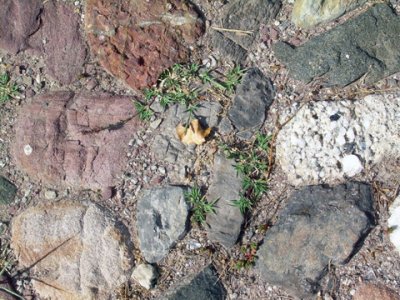
The walls of the ponds, made basically from stone blocks from the river, show a good collection of different types of rocks.
The walls and floors of the Gerri salt farms show an extraordinary diversity of colours, which correspond to the variety of rocks used in the building works.

The walls of the ponds, made basically from stone blocks from the river, show a good collection of different types of rocks.

The red conglomerates are formed by white quartz pebbles, flint and lydites or black quartz. The pebbles are well rounded and are found inserted into a matrix of reddish sandstones. They are detritic sedimentary rocks, formed from gravel deposited by rivers during the Early Triassic, some 250 Mya.

Next to a red limestone, a granite pebble can be seen, whitish with dark spots. The latter material comes from the head of the Noguera, from the area of Espot, la Bonaigua or the Vall de Card&oactue;s.

Detail of "griotte" limestone pebble of the wall, with its characteristic reddish colour with clearer nodules of fossils of molluscs from the Late Devonian.

The floor of a salt bed in the salt farm area: It has ophites, conglomerates, griotte limestone, red sandstones, grey limestone and white sandstones that come from upriver. The jointing, now colonised and very much deteriorated, used grey clay obtained above all from the Enseu road area.

In this detail the of the salt warehouse's wall, it can be seen that the blocks are also of very diverse origins.